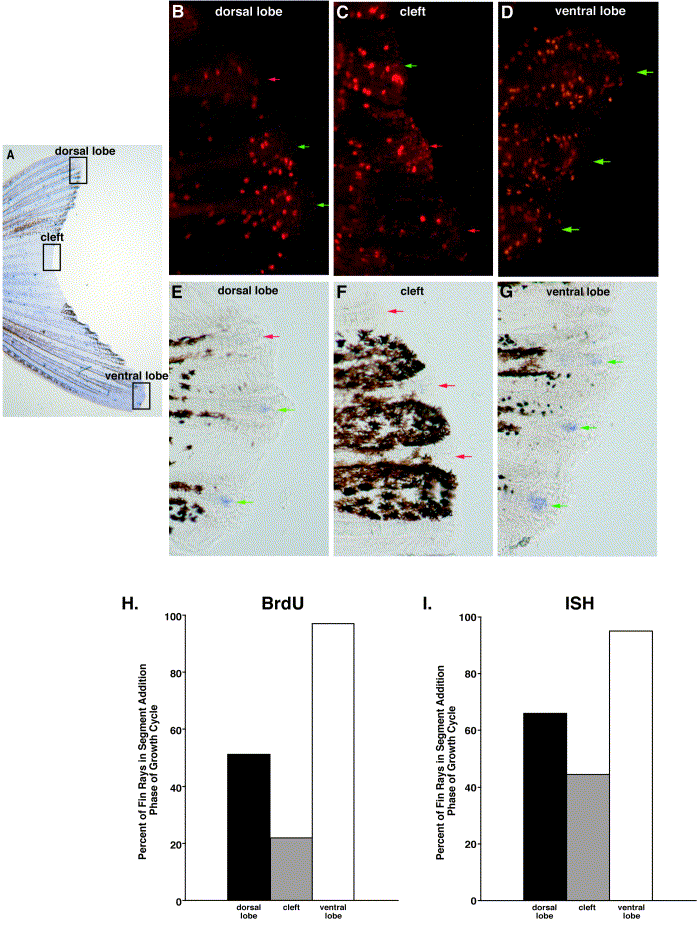Fig. 5 Asynchronous saltation in long fin. In separate experiments, interray growth synchrony in long fin was assessed by using either BrdU to label dividing cells or fa93e10 expression (ISH) to identify fin rays in the segment addition phase of the growth cycle. (A) A whole-mount caudal fin from a long fin heterozygote demonstrating asymmetric overgrowth. Black boxes highlight the three regions (dorsal lobe, cleft, ventral lobe) where growth was assessed. (B–G) Higher magnification views from the dorsal lobe (B, E), cleft (C, F), and ventral lobe (D, G) demonstrating BrdU-labeling (B–D) and fa93e10 expression (E–G). Three fin rays are shown in each photomicrograph. Green arrows identify fin rays in growth phase (>10 BrdU-labeled cells in the distal intraray mesenchyme or expressing the growth marker fa93e10). Red arrows identify fin rays in stasis (<10 BrdU-labeled cells in the distal intraray mesenchyme or not expressing the growth marker fa93e10). (H, I) Using BrdU-labeling (H, n = 33 fins/99 fin rays) or fa93e10 expression (I, n = 43 fins/129 fin rays), three fin rays from each of the dorsal lobe, cleft, and ventral lobe were scored as being either in growth phase or stasis.
Reprinted from Developmental Biology, 259(2), Goldsmith, M.I., Fisher, S., Waterman, R., and Johnson, S.L., Saltatory control of isometric growth in the zebrafish caudal fin is disrupted in long fin and rapunzel mutants, 303-317, Copyright (2003) with permission from Elsevier. Full text @ Dev. Biol.

